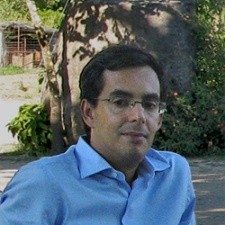Ribeiro, M.C., Pinho, P., Branquinho, C., Llop, E. & Pereira, M.J. (2016) Geostatistical uncertainty of assessing air quality using high-spatial-resolution lichen data: a health study in the urban area of Sines, Portugal.
Science of the Total Environment,
562, 740-750. DOI:10.1016/j.scitotenv.2016.04.081 (IF2016 4,900; Q1 Environmental Sciences)
In most studies correlating health outcomes with air pollution, personal exposure assignments are based on measurements collected at air-quality monitoring stations not coinciding with health data locations. In such cases, interpolators are needed to predict air quality in unsampled locations and to assign personal exposures. Moreover, a measure of the spatial uncertainty of exposures should be incorporated, especially in urban areas where concentrations vary at short distances due to changes in land use and pollution intensity. These studies are limited by the lack of literature comparing exposure uncertainty derived from distinct spatial interpolators.
Here, we addressed these issues with two interpolation methods: regression Kriging (RK) and ordinary Kriging (OK). These methods were used to generate air-quality simulations with a geostatistical algorithm. For each method, the geostatistical uncertainty was drawn from generalized linear model (GLM) analysis. We analyzed the association between air quality and birth weight. Personal health data (n = 227) and exposure data were collected in Sines (Portugal) during 2007–2010. Because air-quality monitoring stations in the city do not offer high-spatial-resolution measurements (n = 1), we used lichen data as an ecological indicator of air quality (n = 83).
We found no significant difference in the fit of GLMs with any of the geostatistical methods. With RK, however, the models tended to fit better more often and worse less often. Moreover, the geostatistical uncertainty results showed a marginally higher mean and precision with RK. Combined with lichen data and land-use data of high spatial resolution, RK is a more effective geostatistical method for relating health outcomes with air quality in urban areas. This is particularly important in small cities, which generally do not have expensive air-quality monitoring stations with high spatial resolution. Further, alternative ways of linking human activities with their environment are needed to improve human well-being.


